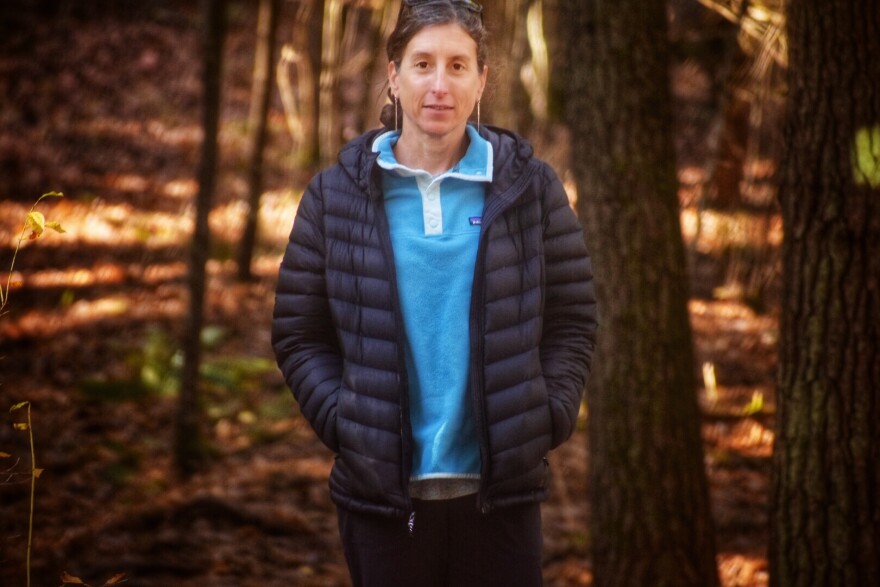Black bears are adapting their behavior in New England to meet seasonal food needs — they’re becoming more suburbanized.
New research shows the bear population in Massachusetts is expanding, even while the state’s human population is the third-most dense among U.S. states.
Kathy Zeller is a conservation researcher at UMass and co-authored the study. She said the bear population has grown from 100 bears in the Berkshires in the 1970s to almost 5,000 bears now.
“And that population is not only expanding in number, but is getting closer and closer to Boston,” Zeller said.
Zeller and I drove out to Hatfield, Massachusetts, to hike in the woods and look for signs of bears.

“It’s a great example of bears living close to areas with human development,” she said. “A recent study that we did showed that bears that live close to human development sometimes take advantage of the supplemental food resources that are available in human areas.”
“Supplemental food” would mean bears aren’t out there merely looking for acorns. But what they’re looking for changes throughout the year.
“In human areas, there are supplemental foods that are high in calories like bird feed,” Zeller said. “Also unsecured garbage. There’s pet food, even agricultural crops. In the fall, when the crops become ripe and are nutritious to eat, bears like to feed on those as well.”


Zeller said the state of Massachusetts has been collaring black bears with GPS devices for 10 years. Among their observations: the bears are diurnal.
“They’re active during the day,” Zeller said. “They have some peaks in activity in dawn and dusk. So just like us — we’re moving around, we’re traveling to work in the morning, and then coming home in the evening. And they rest at night, just like we do.”
Researchers found the bears’ activity depended on where they were living, Zeller said.
“Bears that have this suburban housing density in their home ranges — they’re more used to it, they’re comfortable using it, and so they sometimes show a preference for these human-dominated areas,” she said.
And in those areas, she said, they found bears were actually altering their behavior.
“To be more nocturnal — to take advantage of these human food resources,” Zeller said. “And they were doing that not all times of year, but in the spring, when they’re coming out of hibernation. And then in the fall, they do it again.”

Black bears were eating between 15,000 and 20,000 calories a day, Zeller said, during periods of hyperphagia, or excessive eating.
“To put that in terms of human food, that’s about eight large cheese pizzas a day, or five gallons of chocolate ice cream a day, and they’re doing this for multiple weeks at a time,” she said.
Zeller said the data suggest bears consider human interactions as risky. They weigh the risks and rewards of feeding in certain areas, and use the more human-dominated areas more at night — when the chance of interaction is lower.
There are obvious dangers with all this. One bear researchers tracked, named Fitz, was recently struck by a vehicle on I-91 and died — not far from where we were hiking.
“Bears come through here quite often, in fact,” Zeller said. “I believe just between here and the highway is where one of our bears denned one winter.”

If you happen to cross paths with a bear — and it didn’t hear or smell you coming — Zeller said you should first make yourself look big. And talk to it.
“That way it knows you’re human, and it won’t want to come any closer,” she said.
Hopefully, the bear will turn around and go away.
If it doesn’t?
“Backing away slowly is your best option,” Zeller said. “While continuing to talk to it. Let it know that you are there.”
As for us, we didn’t see any bears, or even signs of bears.
“They are out during the day,” she said. “But we were probably making too much noise. So if they were here, they likely just ran the other direction.”


















